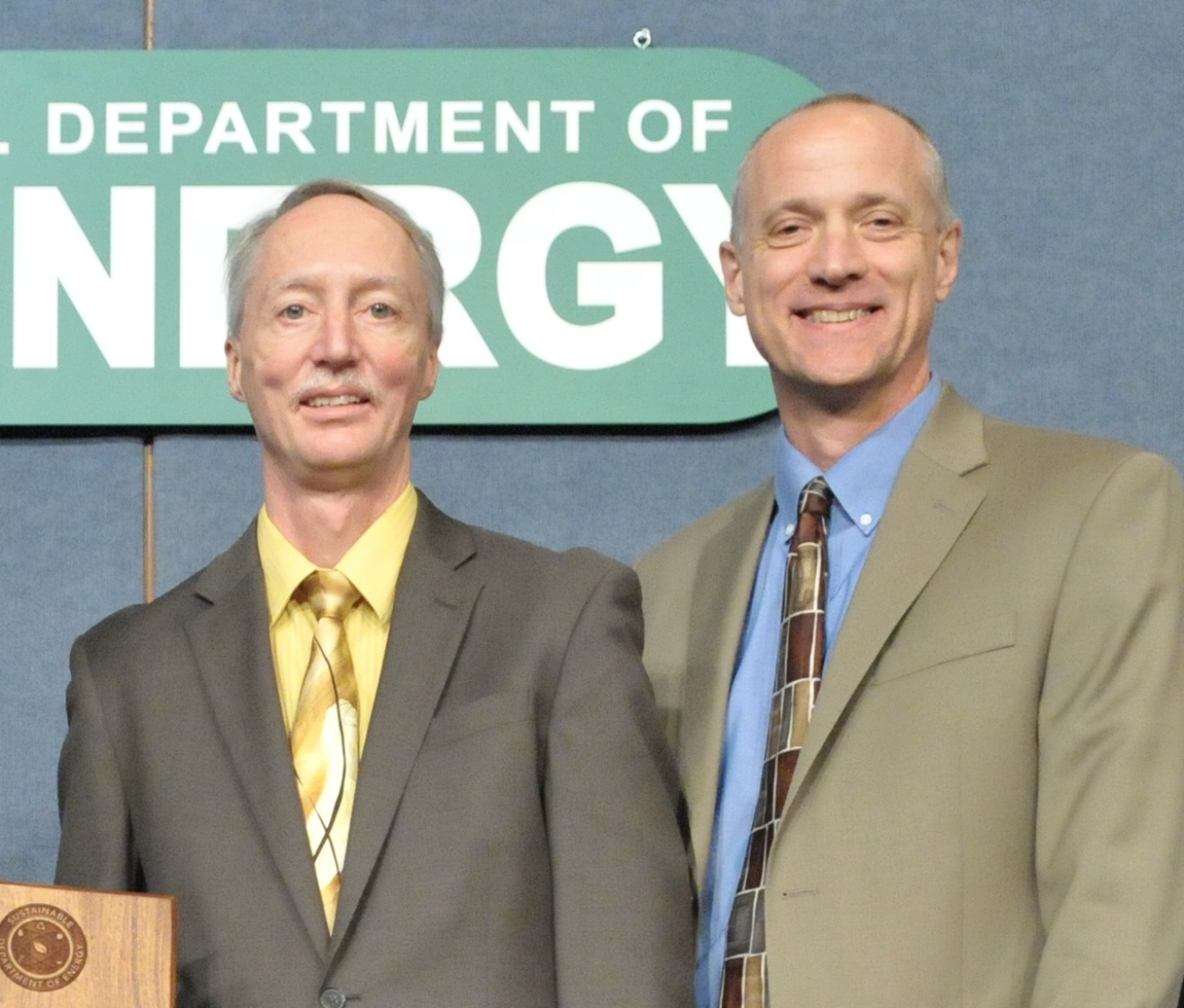Longtime deputy director helped chart path
February 28, 2024
Tom Pauling, left, and David Geiser appear at a U.S. Department of Energy event in September 2012. Pauling led the Office of Legacy Management for a time after Geiser stepped down from his leadership role in 2016. Later that year, Carmelo Melendez took over as director of the office.
As part of LM’s 20-year anniversary celebration, this profile is part of a series of current and former LM employee profiles of people involved in different areas of the LM mission.
Tom Pauling isn’t a quick-change artist, but during his 25-year career with the Department of Energy (DOE), he played many roles.
Pauling began his DOE career at the Office of Environmental Management (EM) as a project engineer in 1993. Once the Office of Legacy Management (LM) was created, he quickly climbed the ladder as a team leader, two separate division director roles, acting director of LM, and finished his career as deputy director. Unofficially, he performed many roles in helping with the cleanup of sites involved with nuclear weapons research and development during World War II and the Cold War.
Pauling is one of the few DOE employees to work on a site from the initial stages of cleanup to long-term environmental stewardship.
“I got on board at Weldon Spring fairly early on in its process,” Pauling said.
The Weldon Spring Site in Missouri is now a case study for LM’s mission to return a site to a community for beneficial reuse. In 1990, the Weldon Spring Site was in the early stages of a massive $900 million, 20-year cleanup effort.
“Every day was different because there were so many moving parts,” Pauling said.
Pauling said back then it was about building the preliminary plan and community awareness with an emphasis on communicating that plan to the people.
Russel Edge, senior LM manager at the time, credits Pauling for leaning into the community efforts while also leading tactical plans.
“He inspired one to learn more, do more, and be a better public servant,” Edge said.
Pauling, in turn, credits the site leads who conducted town halls early on to share information and answer questions about what was happening. The stakes were high because it was the first site near a large population to undergo remediation.
“They had done a lot of preliminary work to get the community to accept the fact that there was going to be an on-site disposal cell cleanup,” Pauling said.
On the logistical front, Pauling’s team was tasked with figuring out how to move uranium waste from nearby pits to the disposal cell site while it was still being constructed. Pauling describes it as building a plane while flying it.
After federal personnel assigned to the site finished abatement of hazardous chemicals such as asbestos and lead, they recognized the need for long-term environmental monitoring at the site. DOE leadership decided a separate organization would best fill that need and would allow EM to focus on completing active cleanups.
“Those early days of LM were challenging,” Pauling said. “Eventually LM established a reputation for efficient and effective management and gained international recognition as a model approach to legacy sites.”
Pauling served as LM deputy director from 2016 until his retirement in 2018.
Edge said Pauling’s leadership at LM was celebrated and “LM would not be where it is today without Tom Pauling.”
As for the site Pauling watched come full circle, Weldon Spring is now a thriving prairie that serves as a natural habitat for plants, wildlife, and part of the migration path of the majestic monarch butterfly.

